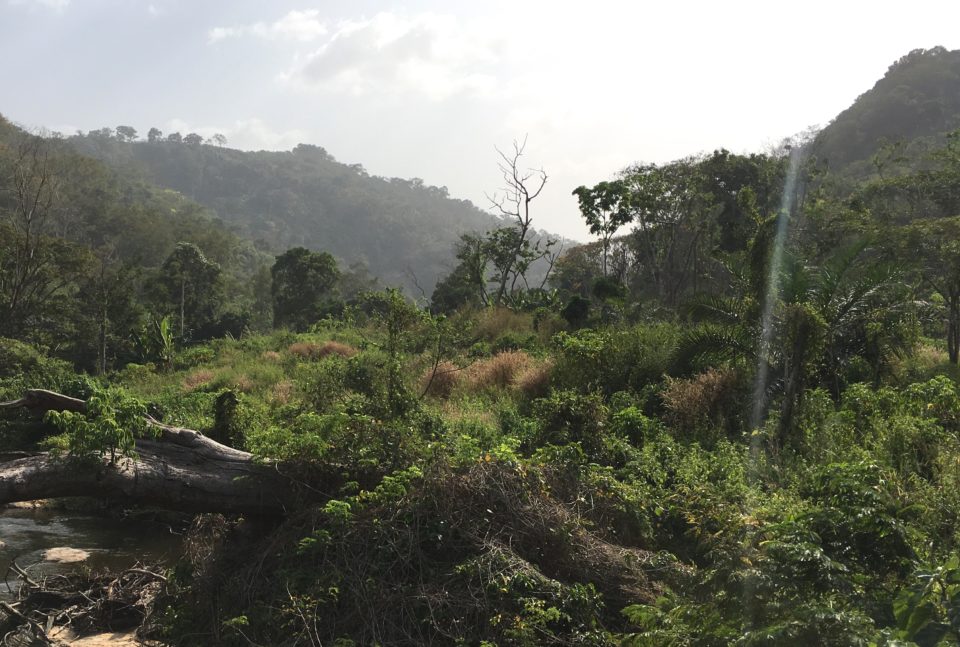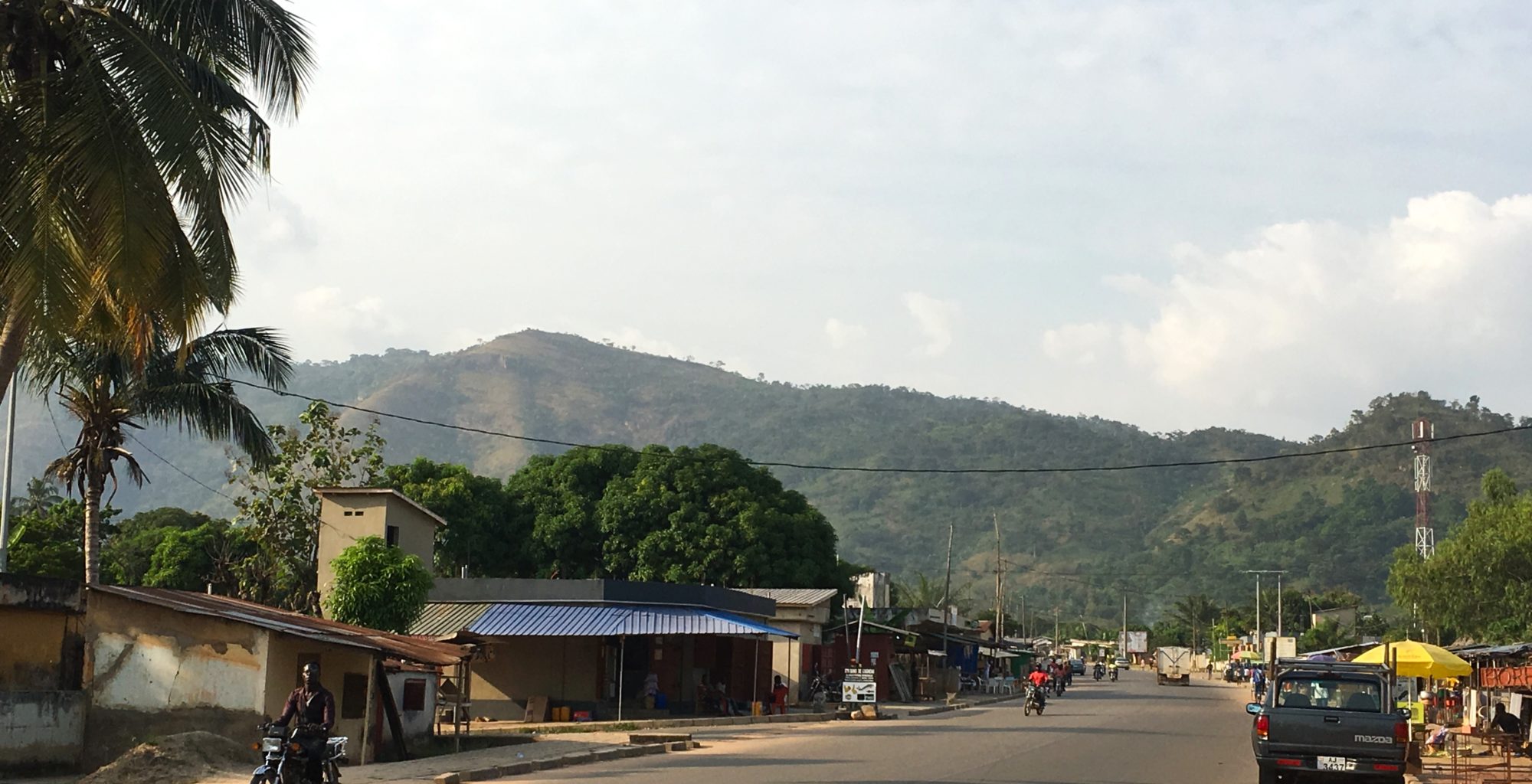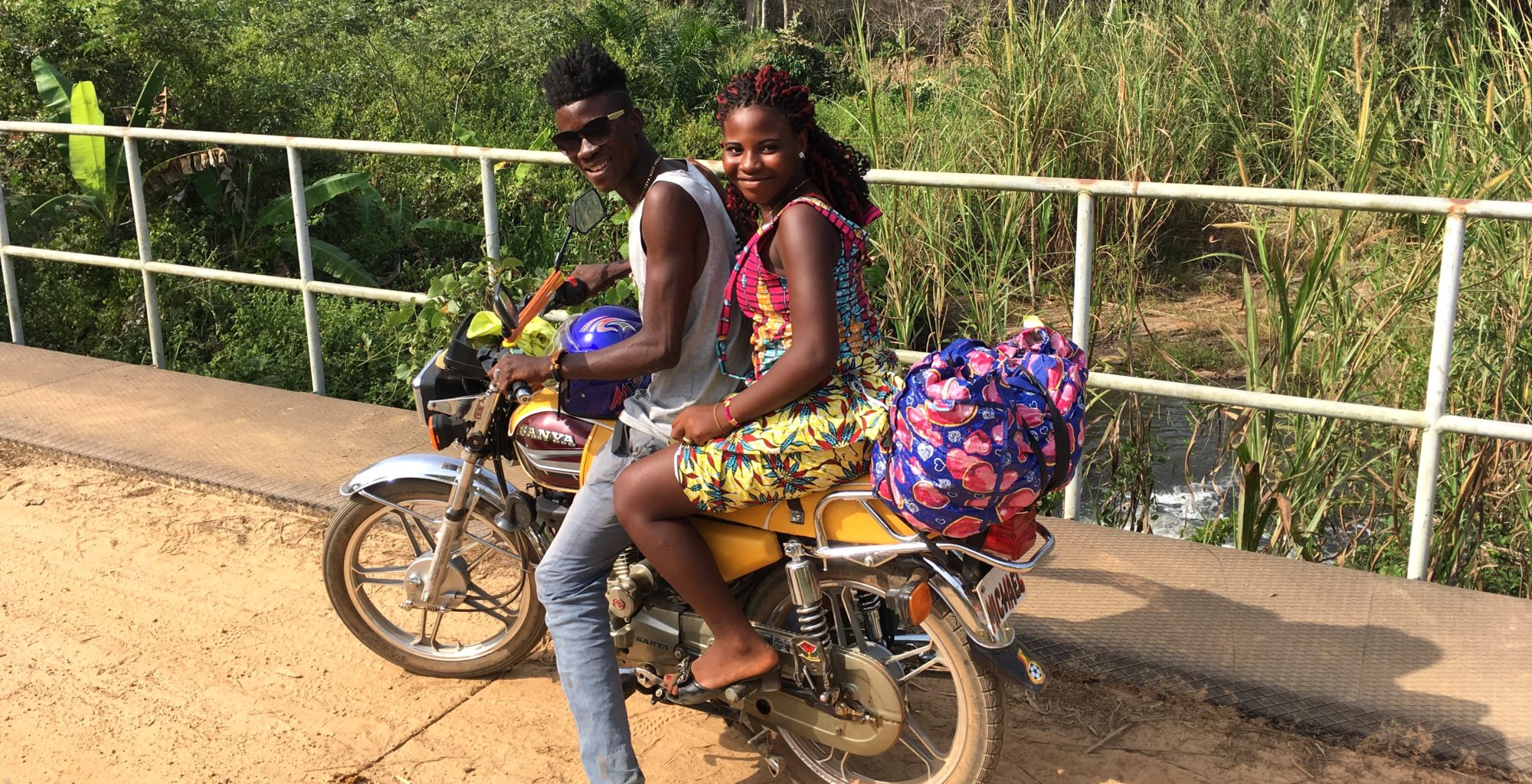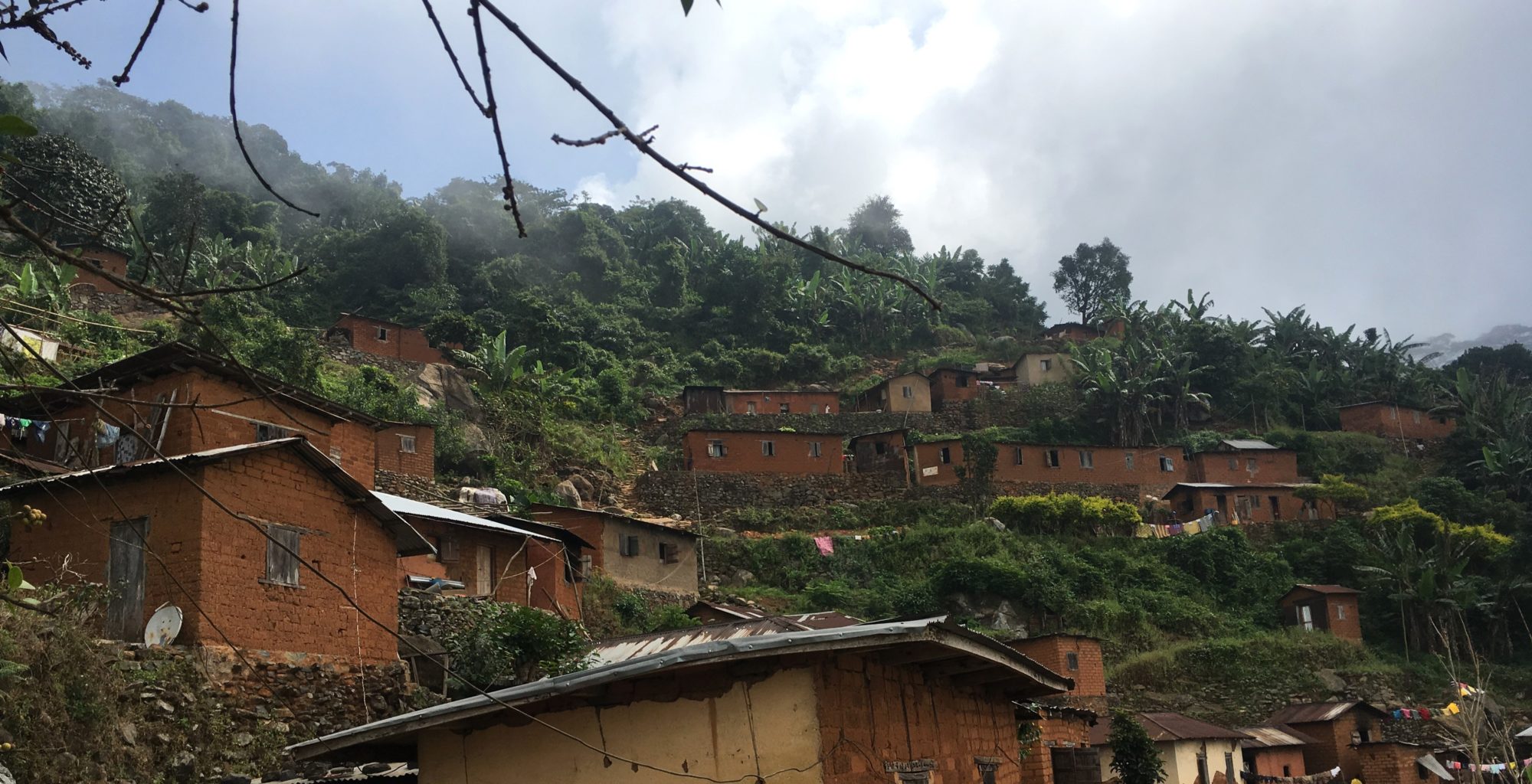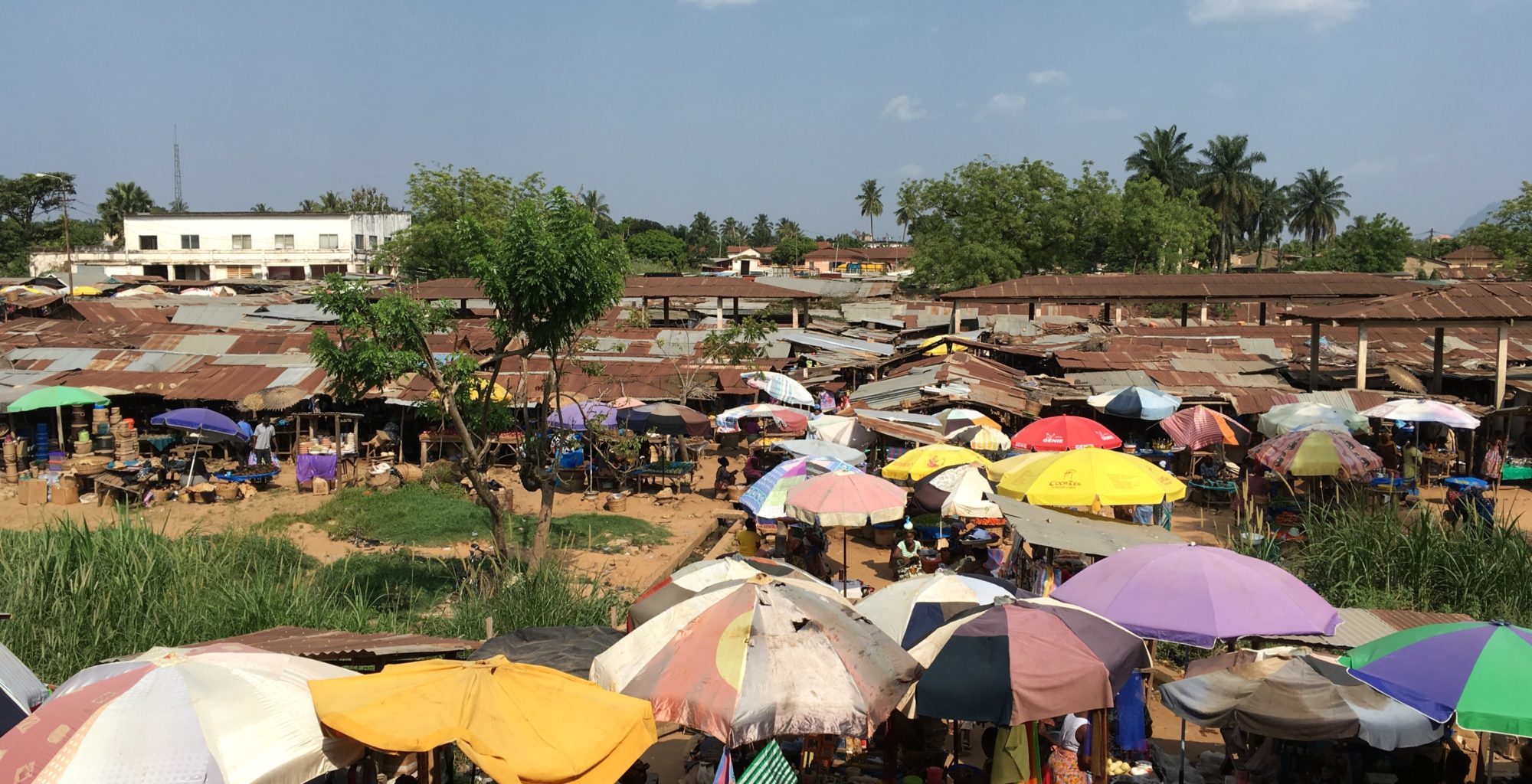Togo is composed of five administrative regions. Plateaux and Centrale lie north of Maritime. Plateaux is named after the Ouatchi Plateau, while further north Centrale is so-named for the fact that it occupies the centre of the country. The Togo-Atakora mountain range spans both regions, starting in the southwest of Plateaux, where the country’s highest peak Mt. Agou (3,235 ft) is located. The range continues northward, creating a natural border with Ghana before veering northeast through Centrale and beyond into Benin.
Plateaux
Plateaux, also known as Terre de Barre, is the largest of Togo’s regions and is renowned for its iron-rich soil which gives much of the land a distinctive red and orange colouring. The industrial city of Atakpamé is the regional capital, though it is the charming city of Kpalimé which is arguably its cultural and activity capital. It can trace its founding to the legendary exodus of the Ewe people from Notsé, which according to tribal lore began as a result of the then Ewe chief, Agorkoli, receiving an omen instructing his people to migrate to new lands in search of better lives. The city grew substantially while part of the German Protectorate of Togoland, and Kpalimé’s handsome red and white cathedral still stands as a testament to its provincial significance.
Today, the city is a relaxed, low-lying, leafy town surrounded by coffee and cocoa plantations and framed by the Togo-Atakora mountains, including Mt. Agou. Small villages of mud-brick houses with corrugated iron roofs are scattered across the mountain’s hillsides, where dogs, chickens, and goats forage about tropical foliage. Several routes to Agou’s summit meander through these settlements, while also passing by streams and waterfalls before offering excellent panoramic views from the mountaintop.
In the opposing direction, roughly 15km east of Kpalimé, close to the Ghanian border, is the village of Kuma Konda, noted as the starting point for some of the most beautiful walks in the country, with dense forests and an abundance of butterflies. From here, travellers can hike to the peak of the revered Mount Kloto or swim at Cascade de Yikpa, which, together with its sister waterfall, the Wli, just over the Ghanian border, is the highest in West Africa.
Many of the forests which these landmarks inhabit are sacred to the local people, with the so-called Valley of the Bats of Kuma-Tsame being amongst the most famous. Legend has it that villagers took refuge in the valley to avoid capture by a rival tribe. The forest’s bats then swarmed together to conceal the locals and have been considered sacred for their help ever since. Today, these large fruit bats quite possibly number in the hundreds of thousands and can be visited with a local guide. Please note that guides may offer to wake the bats by causing a commotion, but this is likely quite distressing for these nocturnal animals. Instead, we would advise observing these fascinating creatures in their natural state, hanging and chattering from branches in their vast colonies.
Centrale
Centrale’s regional capital, Sokodé, is the second largest city in Togo, with a population of 150,000. The majority of the local ethnic Tem group adhere to Islam and are noted for their colourful religious festivals, including Adossa – the so-called Festival of Knives. In an initiation ceremony held in honour of the Prophet Mohamed, dancers cut themselves to show their lack of fear towards adversaries.
Despite being home to Togo’s second city, Centrale is the country’s least populated region, and an impressive 20% of its land area is protected. This includes Togo’s largest national park, Fazao-Malfakassa. Established in 1975 by combining the forest reserves of Fazao and Malfakassa, the park covers an area of almost 2,000 km² and straddles the regional border with Centrale’s northern neighbour, Kara.
The park’s landscape includes wooded savannah, mountain forests and various water systems. It is home to over 290 bird species and a large number of antelope, including various species of duiker, western hartebeest, and oribi. The park is also known for larger species, such as hyena, lion, buffalo as well as both savannah and forest elephants. Following political turmoil in the 1990s and 2000s, however, elephant numbers dwindled to an estimated population of just 50.
Thankfully, recent years have seen a resurged focus on Fazao-Malfakassa as a wildlife sanctuary, with the park being added to UNESCO’s tentative list for cultural & natural heritage in 2002. This has led to UNESCO investing in ‘green’ cottage industries amongst local populations, with benefits for local communities and wildlife alike. Initiatives include training households in beekeeping, which generates income through the sale of honey. The bees also act as a natural deterrent for elephants, ensuring they avoid local farms and thus reducing human-wildlife conflict. Conservation efforts are paying off with a 2021 review noting that the richness of the park’s biodiversity is in a healthy state once again.
For accommodation in Plateaux & Centrale, see below.
